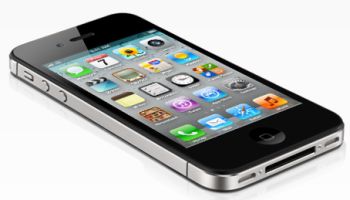

A startling new fact about the success of the Apple iPhone has been revealed in a new report from research firm Strategy Analytics.
Ever since the iPhone launched five years ago on 29 June 2007, it has earned Apple cumulative revenues of $150 billion (£96.5bn) said Strategy Analystics.
The firm estimates that over the years, Apple has shipped 250 million iPhones worldwide.
“The iPhone portfolio has become a huge generator of cash and profit for Apple,” Neil Mawston, Strategy Analytics executive director, said in a 27 June statement. “A quarter of a billion iPhones have been shipped cumulatively worldwide in the first five years since launch and Apple reaches its fifth birthday at the top of its game.”
The launch of the iPhone was meaningful not only for Apple but for the mobile industry and beyond. Featuring the first touch-based user interface, it attracted a tremendous number of dollars and eyeballs, effortlessly expanding the smartphone market beyond mobile professionals.
Mawston warns, however, that the next five years are likely to prove more challenging for Apple and the iPhone.
“Some mobile operators are becoming concerned about the high level of subsidies they spend on the iPhone,” said Mawston, “while Samsung is expanding its popular Galaxy portfolio and providing Apple with more credible competition.”
Indeed, not only do shipments of Android smartphones exceed those of iOS-running devices, but Samsung alone, on the strength of its Galaxy line, now also ships more smartphones than Apple. While Apple grew nearly 89 percent year over year during the first quarter of 2012, shipping 35.1 million smartphones according to IDC, Samsung grew an astounding 267 percent, shipping 42.2 million units, up from 11.5 million a year earlier.
Samsung began selling its newest smartphone, the Galaxy S III, in the United States 21 June, after debuting it weeks earlier in 28 countries. Though with weakened inventories, due to high demand, it’s now available from T-Mobile and Sprint, and by late July will be available from Verizon, AT&T and US Cellular.
Apple, by contrast, made the iPhone available in the United States exclusively through AT&T for several years before finally extending it to Verizon Wireless in early 2011 and Sprint toward the end of that year.
It’s rumoured that the next iPhone, expected to arrive in the Autumn, will be available from T-Mobile and U.S. Cellular as well. While Apple’s patent disputes with Samsung highlight the California company’s belief that the South Korean device maker has borrowed from it too heavily, Apple – which is also expected to finally increase the display size of the next iPhone – appears to be learning a few things from Samsung as well.
Strategy Analytics expects global handset shipments to grow by just 4 percent during the second quarter of 2012, though the second half of the year will be stabilised by an “improved pipeline of major new models, particularly Apple’s iPhone 5.”
The industry’s most important driver, however, will be Long-Term Evolution (LTE) 4G technology, which the firm expects will double global handset shipments in 2013.
Are you a smartphone expert? Try our quiz!
OpenAI chief operating officer Brad Lightcap to oversee international expansion as company consolidates lead in…
Chinese researchers publish details on device that could wreak havoc on undersea communications cables in…
Former Intel chief Gelsinger expands role at Gloo, becoming executive chairman and head of technology…
MEPs add to Commission pressure for second EU Chips Act amidst industry calls for renewed…
Smartphone maker Xiaomi reportedly raises about $5.5bn in Hong Kong share sale as it invests…
BYD's Qin L EV sedan starts at about half the price of Tesla's Model 3,…